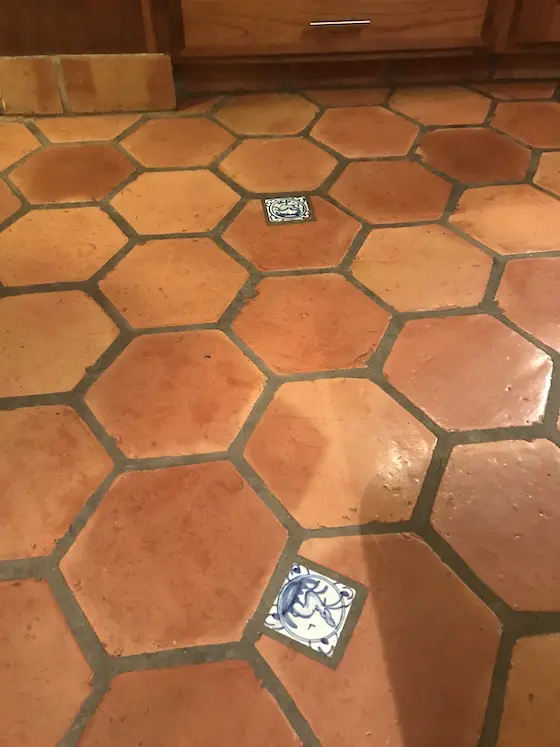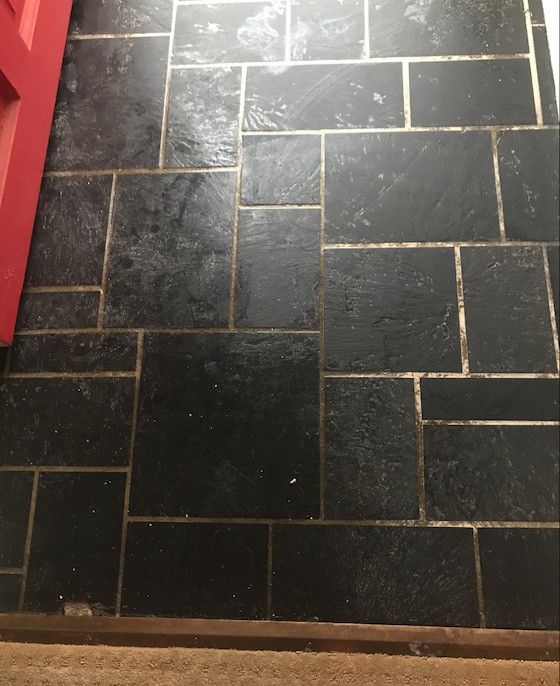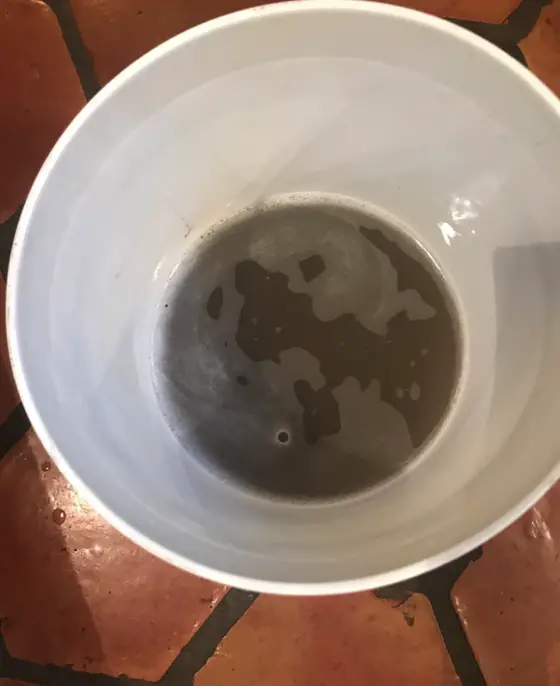Cleaning and Restoring Tile and Slate Floors
Cleaning and Restoring Tile and Slate Floors - Easy!

This tile floor may look good to you, but believe me it’s got layers of wax that was applied over dirt. Copyright 2022 Tim Carter
A month ago you may have read my column about how to get ceramic tile grout clean. As you might suspect, I received quite a few thank-you notes via the Ask Tim page on my www.AsktheBuilder.com website. It’s always gratifying to hear from you knowing that I helped you save time and money.
Pamela, who hails from Kenosha, WI, reached out to me after reading that same column. But she had a bigger problem than just her tile grout. Here’s what she sent me: “I would like to know how to properly clean, restore, and maintain the terracotta floor in my kitchen, the slate floor in my entry hall, and half bathroom. I believe the prior owner may have waxed them to get a shine, so there may be some buildup. The floors really don’t look that good no matter what I’ve tried.”
Pam used the image upload tool on my Ask Tim page and sent me a photo of each of the floors. I was able to see the problem right away and started a back-and-forth conversation with her. The first thing I shared was that her question was so good I was going to make a star out of her. I’d love to do the same with you with any problem you have at your home.

Look at how this slate floor was ruined by coats of wax and probably urethane. Look at how FILTHY the grout is in places. It was originally an off-white color! The owner may have to use paint stripper on the slate to remove what could be urethane.
Do you have tile or slate floors that look drab? Have you tried all sorts of polishes to only discover days or weeks later your floors look bad again? Have you been trained how to clean a floor? There’s absolutely no shame in admitting you’ve not been trained by a professional floor cleaner.
Finally, have you fallen into the trap of using those pad mops that come with disposable pads and have a spray bottle of cleaner/polish on them? Let’s unpack all of this so your tile and slate floors will look as fantastic as the day they were installed.
Once I peered at Pam’s photos, I could see she was right about the wax buildup. I suggested to her to go out and purchase a small quart bottle of a commercial wax remover and read the use instructions. I’ve used these for years when I’ve volunteered to help restore waxed terrazzo floors in my kids’s grade school. A group of parents got together to clean and restore all of the floors and stairwells in the entire school because it was just too much work for our older custodian.
I also asked Pam to take many photos as she worked on the project. I wanted to be able to share those with you. You can see them if you look up this column on my website.
The most dramatic photo that Pam shared with me, and I specifically asked her for it, was the one of the bucket of water that she dipped her scrub brush in as she removed the built-up layers of wax. The water was disgusting. Keep in mind Pam thought her floors were clean! Fortunately she didn’t bite off my head in our email exchange.

This is the scrub water as layers of wax are removed. The wax stripper softened the wax and scrubbing with soapy water removes it. Look at how filthy the floors were when layer after layer of wax was applied. GROSS!
If you’re using real wax or those grocery-store pad mops on your floors, there’s a great chance you’re not really cleaning your floor. I was trained by a professional how to clean tile floors. This is but one way to get great results.
I start by sweeping the floor or vacuuming it. You want all loose debris off the floor. I then break out my old-fashioned string mop. I mop the floor with a solution of soapy water. I simply use the best liquid dish soap I can buy.
Many people don’t use a string mop correctly. Once you dip it in the soapy water and remove excess water, you spin the mop so the strings spin around like an amusement park ride. When the mop hits the floor, the strings should be pointing out in all directions in a circle. Move the mop sideways left and right working it back towards your body. Only clean about 10-12 square feet before rinsing out the mop to get fresh soapy water.
If the water gets filthy before you’re finished, discard it and get new soapy water. Otherwise you’re simply mopping the floor with filthy water for goodness sake. If you use one of the pad mops, you probably make the same mistake and don’t change the pad frequently enough. Such a waste of money!
After mopping the floor with soapy water, it’s time to rinse it. You put clear water in the mop bucket and do the same thing as you did with the soapy water. As the water gets cloudy, discard it and get fresh rinse water. Once you mop the floor and the water is no longer getting cloudy, you know it’s clean.
I wouldn’t recommend using any polish on your tile floors. Most tiles come from the factory with a glaze that’s a thin coating of real glass. That’s all the polish or shine you need. Slate has its own matte appearance that’s extremely attractive.
I have a theory that the pad mop polishes actually are designed to dull within days and attract dirt. This way you break out your pad mop, squirt their solution on the floor, and try to make your floor look good. Week after week you end up being like a hamster going around one of those metal wheels in a cage wasting your money. But what do I know? I used to each lunch for 20+ years sitting on empty overturned drywall mud buckets! Here’s to your new clean floors!
Column 1486
One Response to Cleaning and Restoring Tile and Slate Floors